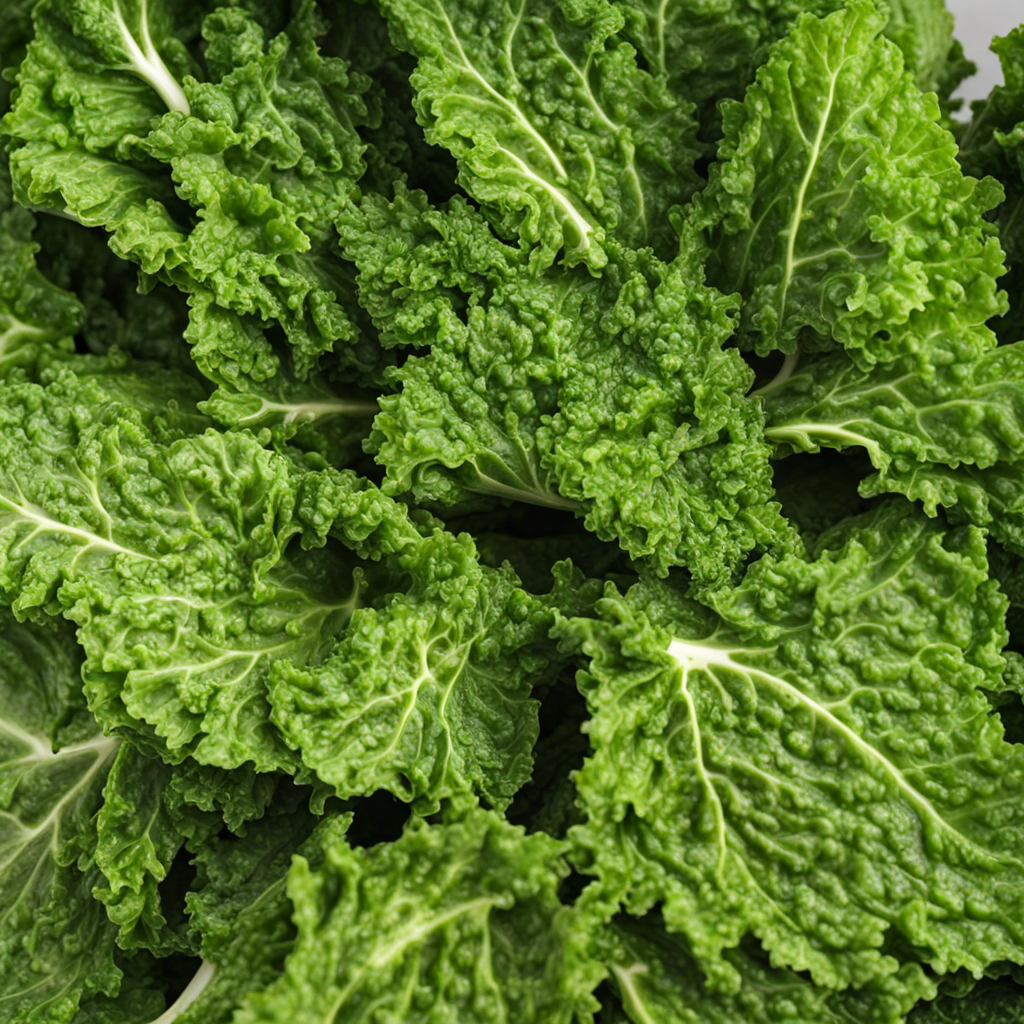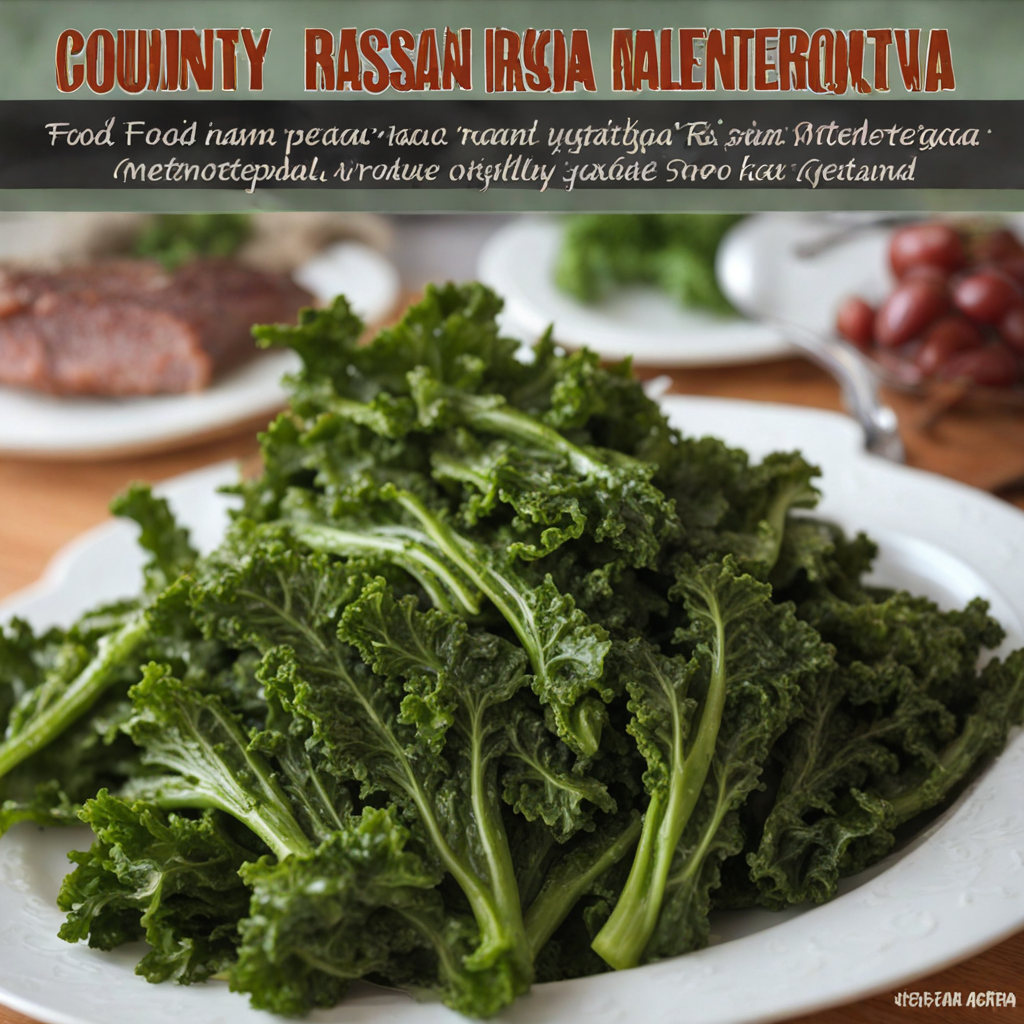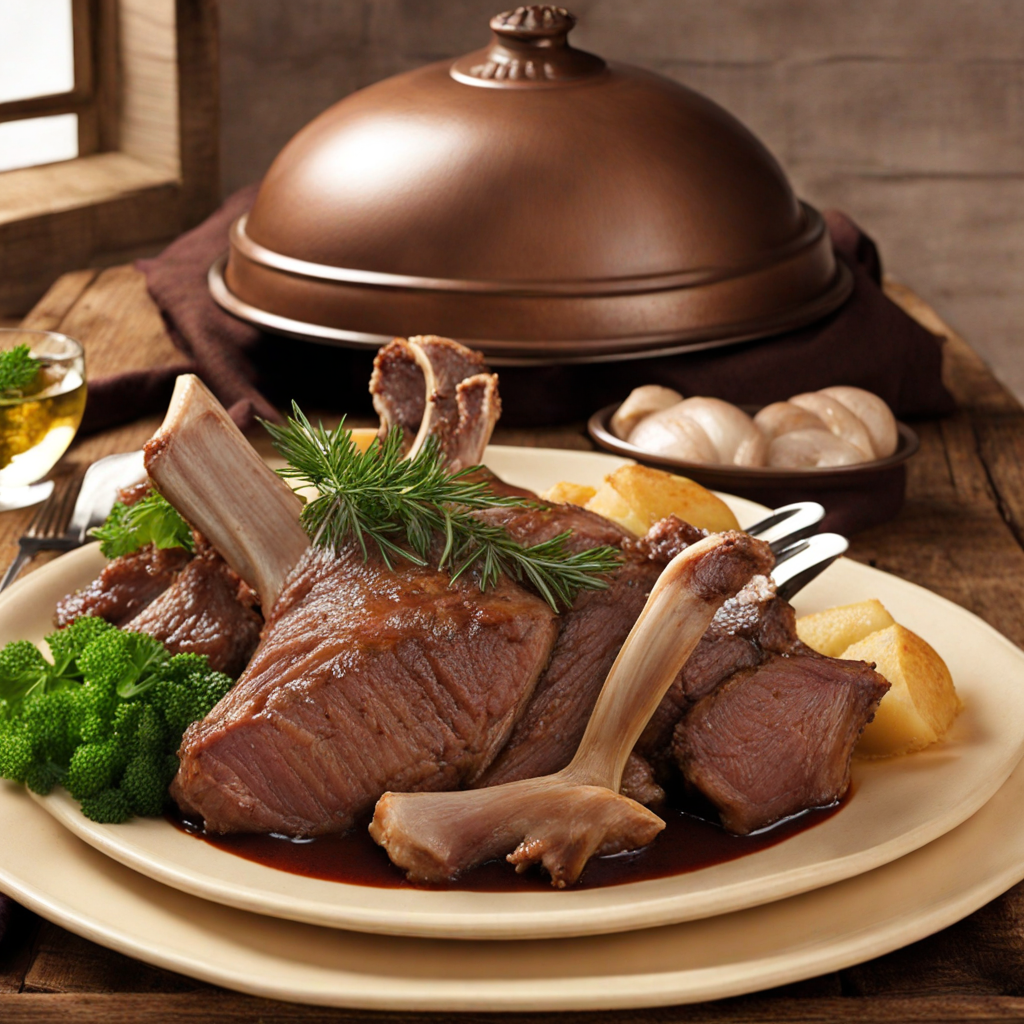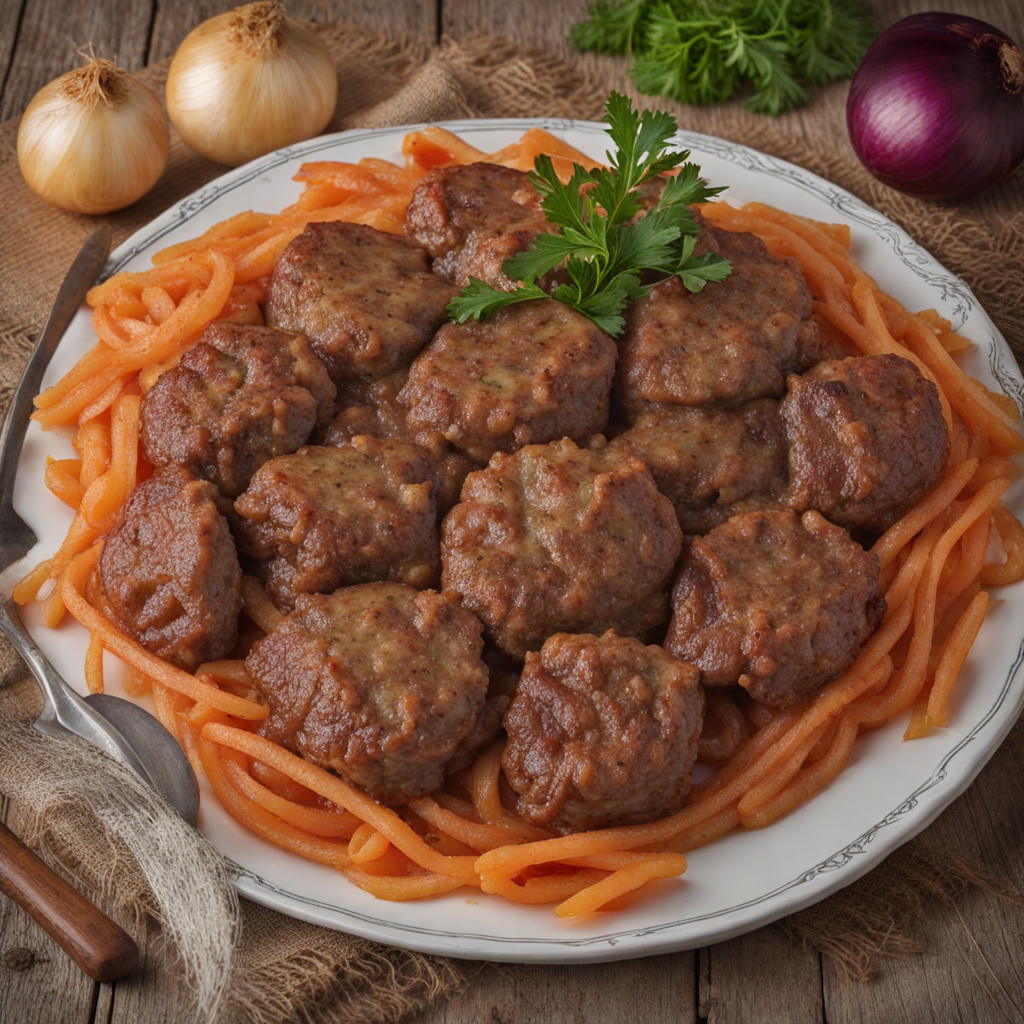Raštan
Raštan is a traditional Montenegrin dish that brings together the earthiness of greens and the comforting flavors of a hearty stew. At its core, raštan is made from the leaves of the collard greens plant, which are known for their robust texture and slightly bitter flavor. These greens are typically simmered slowly, allowing them to soften and release their natural flavors. The dish is often prepared with the addition of various meats, such as pork or smoked sausage, which infuse the greens with rich, savory notes. The combination of these ingredients creates a dish that is both satisfying and nourishing, making it a favorite among locals. The preparation of raštan often includes a medley of spices and seasonings that enhance its flavor profile. Garlic, olive oil, and sometimes even a touch of vinegar are commonly used to add depth and brightness to the dish. The cooking method allows the flavors to meld beautifully, resulting in a comforting meal that is perfect for sharing with family and friends. Served warm, raštan is often accompanied by crusty bread, which is ideal for soaking up the delicious juices, making every bite a delightful experience. Raštan is not just a meal; it is a reflection of Montenegrin culture, showcasing the importance of fresh, locally sourced ingredients. This dish embodies the spirit of the region, where the simplicity of the ingredients leads to complex and satisfying flavors. For anyone looking to discover a new taste, raštan offers a unique culinary experience that is both hearty and wholesome, inviting diners to explore the rich gastronomic traditions of Montenegro.
How It Became This Dish
The Journey of Раштан: A Culinary Gem of Montenegro Nestled in the heart of the Balkans, Montenegro is a country known for its stunning landscapes, rich history, and vibrant cultural tapestry. Among its culinary treasures, one dish stands out for its deep-rooted significance and unique flavor: Раштан (Rashtan). This traditional Montenegrin food, made from a specific type of wild green known as wild chard or lamb's lettuce, carries with it a story that reflects the broader narrative of Montenegrin identity and heritage. Origins of Раштан The origins of Раштан can be traced back to the mountainous regions of Montenegro, where the rugged terrain and varying altitudes create a unique ecosystem. These highlands are home to a diverse array of flora and fauna, and Раштан is one of the wild greens that thrive in this environment. Wild chard has been used in many Mediterranean cuisines for centuries, but in Montenegro, it evolved into a dish that resonates with the local culture. The use of wild greens in cooking is a tradition that predates the modern era and is deeply embedded in the practices of Montenegrin households. Historically, the people of Montenegro would forage for wild plants and herbs, utilizing what the land offered them. This practice not only provided sustenance but also fostered a strong connection between the Montenegrins and their natural surroundings. Раштан emerged as a staple, particularly in the rural areas where access to cultivated vegetables was limited. Cultural Significance Раштан is more than just a dish; it embodies the spirit of Montenegrin culture. Traditionally, it is prepared during the spring and early summer months when the wild chard is at its freshest. Families would gather to forage for the greens, turning the preparation of Раштан into a communal activity. This practice strengthens family bonds and reinforces the importance of community in Montenegrin society. The dish is often served as a side or incorporated into main meals, typically accompanied by potatoes, other vegetables, or meats. Its earthy flavor and nutritious profile make it a beloved choice among locals, symbolizing both sustenance and the connection to the land. In many Montenegrin homes, Раштан is prepared according to cherished family recipes passed down through generations. The variations in preparation reflect local ingredients, regional cooking styles, and personal preferences, further enriching the dish’s cultural tapestry. Furthermore, Раштан holds a place in Montenegrin celebrations and gatherings. It is often featured in traditional feasts, particularly during the springtime festivals that celebrate the end of winter and the arrival of new life. The dish's presence on the table during these occasions signifies abundance, health, and the importance of honoring one’s roots. Development Over Time As Montenegro navigated through historical upheavals—from Ottoman influence to the rise of Yugoslavia—its culinary traditions evolved while still retaining core elements. The introduction of new cultural influences brought different spices and cooking techniques, which made their way into the preparation of Раштан. While the heart of the dish remained focused on the wild greens, the ways in which it was prepared began to diversify. In the late 20th century, Montenegro underwent significant political and economic changes, particularly with the dissolution of Yugoslavia. These changes led to a renewed interest in local culinary traditions as a means of asserting national identity. Montenegrins began to embrace their heritage, and dishes like Раштан were revitalized. Chefs started to experiment with modern twists while paying homage to traditional methods. This fusion of old and new made Раштан increasingly popular not only within Montenegro but also in international culinary scenes. Today, Раштан is often featured in Montenegrin restaurants, particularly those that focus on traditional and regional cuisine. Chefs proudly showcase the dish, sometimes pairing it with artisanal cheeses or locally sourced meats, appealing to both locals and tourists. The dish has found a place in the growing Montenegrin gastronomic tourism sector, which seeks to highlight the country’s culinary heritage as an integral part of its cultural identity. Contemporary Relevance In recent years, there has been a resurgence of interest in foraging and the use of wild ingredients, not only in Montenegro but globally. This trend aligns perfectly with the traditional practices surrounding Раштан. As people become more aware of the importance of sustainable cooking and local sourcing, dishes like Раштан gain new relevance. Modern chefs and home cooks alike are exploring the benefits of wild greens, incorporating them into various dishes beyond their traditional uses. Moreover, the popularity of Montenegrin cuisine is on the rise, thanks in part to the country’s growing reputation as a travel destination. Tourists are increasingly drawn to the authenticity of local dishes, and Раштан serves as a perfect representation of Montenegro's rich culinary heritage. Food festivals and cultural events often highlight this dish, allowing visitors to experience the flavors and traditions of Montenegro firsthand. Conclusion Раштан is a culinary treasure that encapsulates the essence of Montenegrin culture and history. Its origins in the rugged landscapes of Montenegro, combined with its cultural significance and evolution over time, make it a dish worth celebrating. As Montenegrins continue to embrace their culinary heritage and share it with the world, Раштан stands as a testament to their resilience, creativity, and deep connection to the land. In a world increasingly fascinated by authentic, local, and sustainable food practices, Раштан shines brightly as a symbol of Montenegro's rich past and promising future. Whether enjoyed in a family kitchen or a gourmet restaurant, Раштан offers a taste of Montenegro’s soul—one that is vibrant, nurturing, and deeply rooted in tradition.
You may like
Discover local flavors from Montenegro







